We continue with our look at the great pipers whose music marked the tragic era of the First World War….
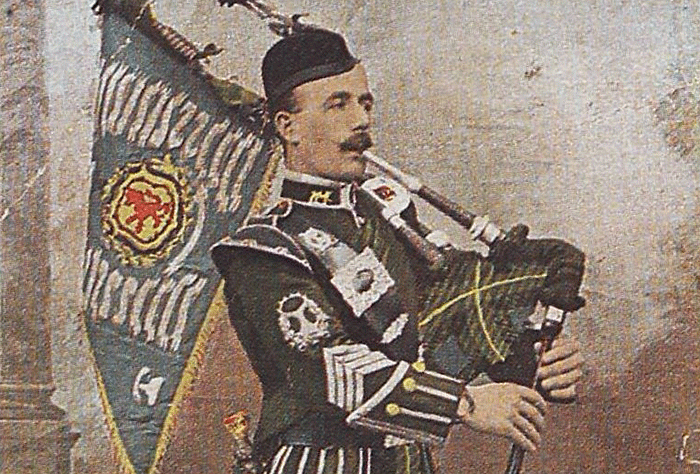
Next we will consider P/M George Stewart McLennan of the Gordon Highlanders, GS as he was, and still is, known. He is pictured above in full ceremonial dress. GS was a child prodigy – at 10 years old he was commanded to play for Queen Victoria at Balmoral Castle.
He was a brilliant piper and the composer of masterpieces such as Kilworth Hills, Mrs MacPherson of Inveran, Jig of Slurs, Little Cascade, Lochaber Gathering, Inverlochy Castle, all still played at the highest level today.

By Harry Stevenson
Two of GS’s 6/8 marches from the Great War are Captain C. R. Lumsden and Major John MacLennan. Captain Charles Ramsay Lumsden was educated at Eton College and served in the South African wars. He was one of the first Gordon’s officers to be killed during the retreat from Mons in August 1914.
Major John MacLennan was a cousin of GS’s had served in the Boer Wars in South Africa as the R.S.M (Regimental Sergeant Major). He was eventually commissioned but died as a result of injuries following an explosion.
GS had written a tune for Britain’s volunteer army, Kitchener’s Army, named for the recruiting officer famous from the ‘You’re Country Needs You’ poster. Nevertheless, the old regular troops requested a tune for themselves, so GS wrote the very well known tune, King George V’s Army, again still very popular today (as are most of his tunes it must be said).
Have any of you seen on television antiques shows the little brass boxes embossed with a girl’s head and the letter M on each side? These are known as Princess Mary’s Christmas Boxes. In 1914 Princess Mary, the daughter of King George V and Queen Mary, was 17.
She organised a fund to have a Christmas present sent to all servicemen and women at the front, and stationed elsewhere, during the conflict. In each little brass box there were tobacco, cigarettes, chocolate, confectionery and spices, a Christmas card, and a picture of herself.
P/M James Dunbar of the Royal Scots composed a very catchy 6/8 march in her honour: HRH Princess Mary.
We now come to the music of John MacLellan DCM. The first tune we are going to look at is Major Moir at Villevecque. Major Bobby Moir was in the Argylls. In March 1918 the Germans had attacked the battalion HQ at Villevecque just west of the town of St Quentin on the Somme.
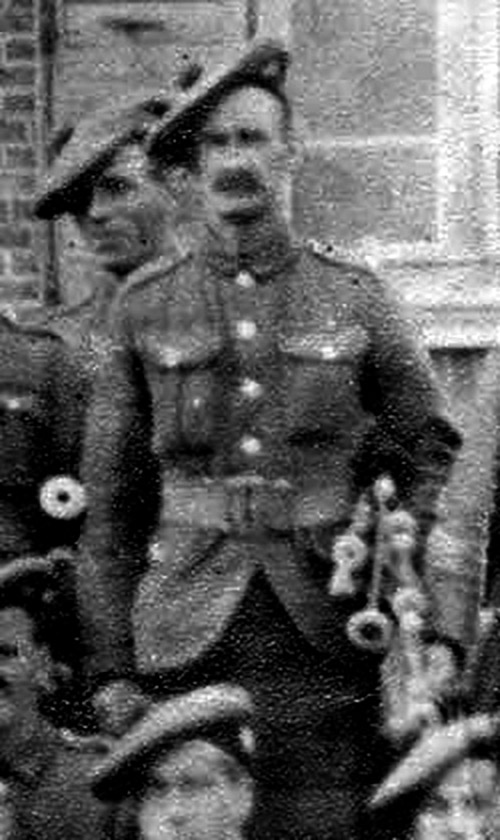
The battalion colonel was killed and Major Bobby commanded what was left of the Argylls and held the line for five days until they were relieved. He later became CO of the Argylls in 1919. My thanks to Jeannie Campbell, formerly of the College of Piping Museum, for the above information about Major Moir and Captain Lumsden.
Earlier I had mentioned the two pipers who were recipients of the Victoria Cross, the highest British military award for bravery. The first was Daniel Laidlaw VC of the King’s Own Scottish Borderers.
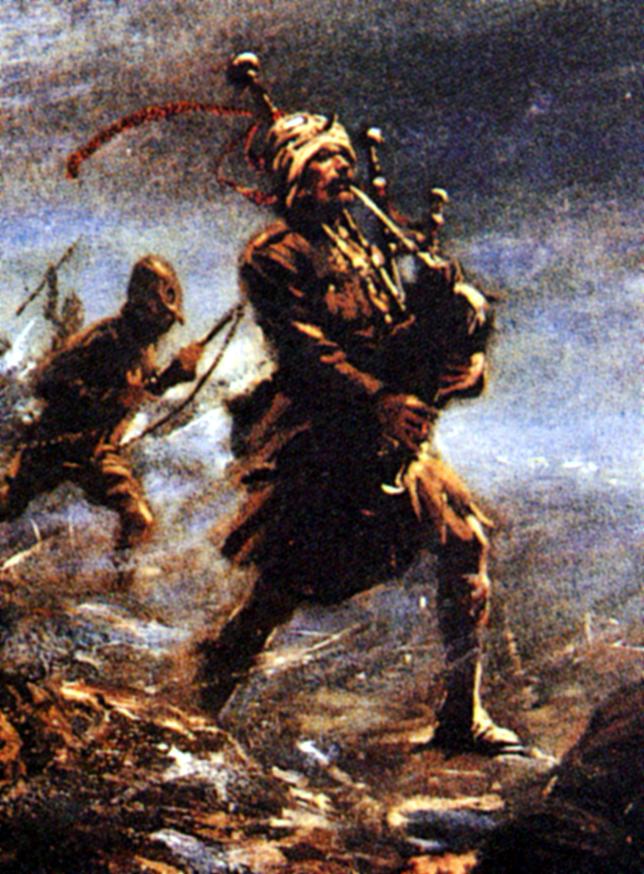
A native of Berwickshire, his first military service was with the Durham Light Infantry before transferring to the KOSB as a piper.
At the battle of Loos in September 1915, prior to an assault on the enemy trenches, Piper Laidlaw, seeing that his company were shaken with the effects of gas, mounted the parapet and marched up and down playing his men out of the trenches and towards the German lines. He was wounded but carried on playing his pipes.
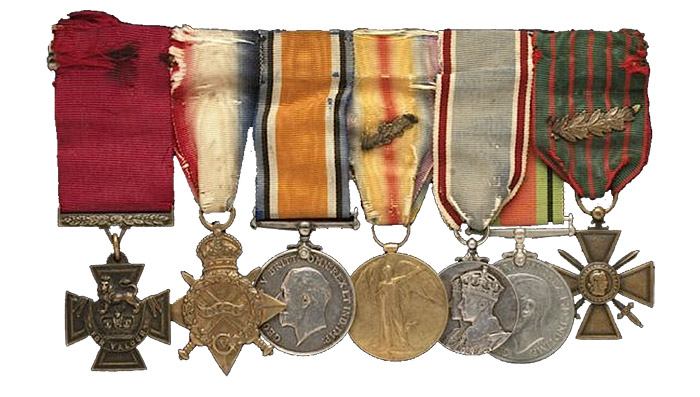
A few years ago I saw a wee film clip of Piper Laidlaw playing All the Blue Bonnets Are Over the Border. He used the open C and played high A with the F finger down.
The second ‘piping’ VC went to James Richardson, 16th Batt. Canadian Scottish. He was born in Bellshill, Lanarkshire, but went to live in British Columbia.
During the battle of Ancre Heights on the Somme in 1916, his company was held up by rolls very strong barbed wire. Seeing the difficulty and the way it had stalled his comrades, Private Richardson requested permission to play his company over the top.
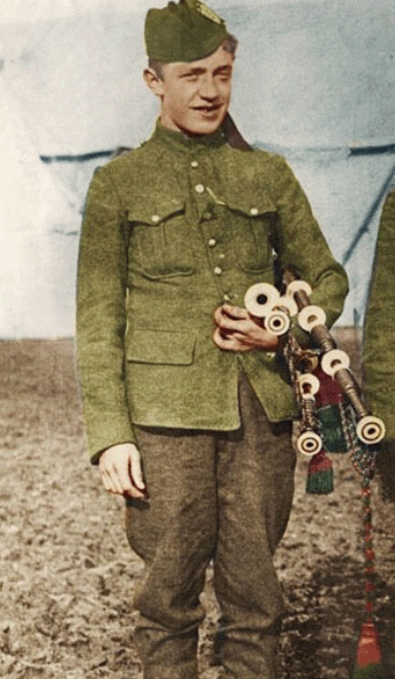
This he did and the men were so inspired that the German position was rushed and captured. Private Richardson escorted his wounded Company Sergeant Major back to safety but when he returned to No Man’s Land to recover his pipes he was tragically killed. His body was not found until four years later, in 1920, one hundred years ago. His pipes are now on display in the British Columbia Legislature Museum.
Now for some competition marches. As we all know these are the tunes played by solo pipers and pipe bands in competitions. They have a strong melodic line backed up with a high degree of finger technique.
First for a mention is From Kantara to El Arish by P/M William Fergusson. This tune commemorates the 7th HLI’s trek across the Sinai desert from El Kantara on the Suez canal to El Arish on the Mediterrean coast. Three major battles were fought on the way, the soldiers experiencing blistering heat and freezing nights. The tune was written in 1917.
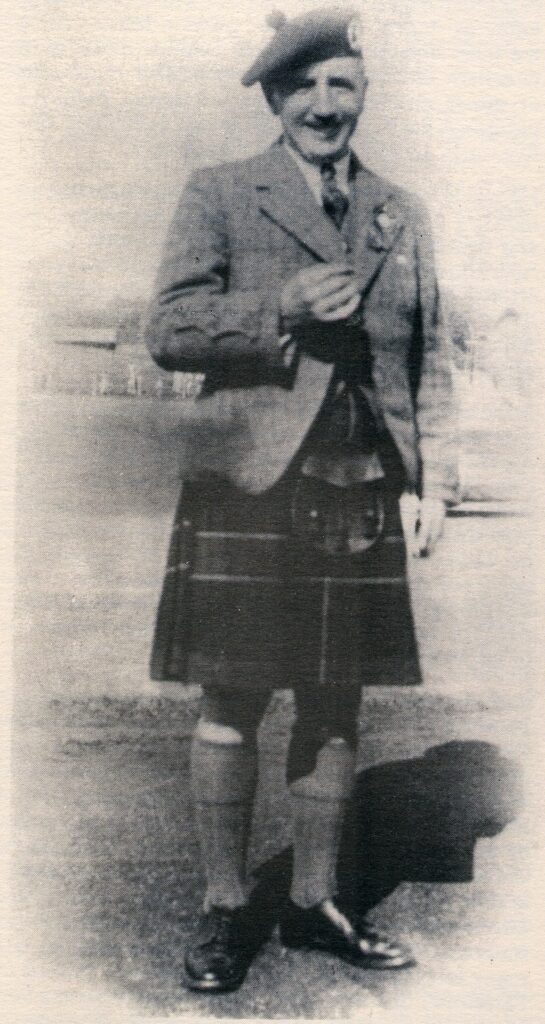
Next it’s The Taking of Beaumont Hamel by John MacLellan, Dunoon. Beaumont Hamel was a heavily fortified village on the Somme. Two attempts to take it had failed. Then the 51st Highland Division were given the onerous task of overcoming the well entrenched enemy – and they did, this in Nov 1916 after very heavy fighting. The 51st took over 2,000 German prisoners.
Now for two short tunes with rather long names. The first is the 43rd Cameron Highlanders of Canada March to Sanctuary Wood. The eponymous wood is two miles from Ypres (Wipers to the British Tommies). Today it has the best preserved trench system from the war and also has a museum.
It’s also close Hills 60 and 62 which were the scene of heavy casualties among the Canadians who fought there. Over the course of the war there were 230,000 Canadian servicemen killed or wounded. The tune was written by the pipers of the 43rd.
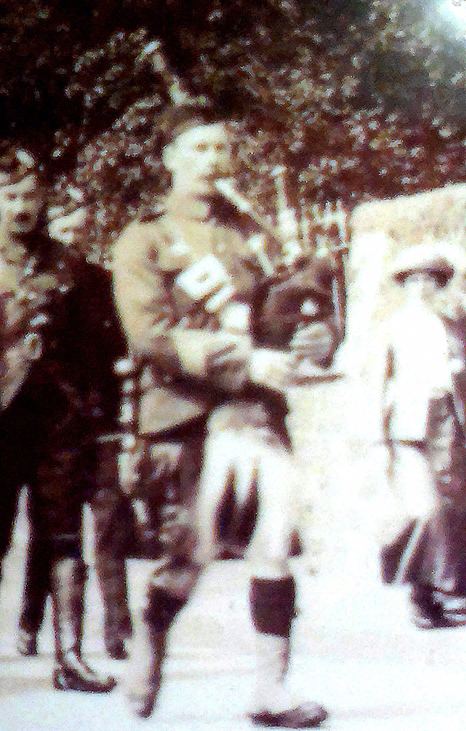
The second small tune is the 8th Argyll & Sutherland Highlanders Farewell to the 116th Regiment de Ligne at Bosincourt by P/M Willie Lawrie. The 116th came from Vannes in Brittany and had been stationed with the Argylls in early 1916, but when the Germans attacked Verdun in Feb 1916, four French divisions including the 116th were diverted there.
Being Bretons, they would have got on well with the Scots and Willie Lawrie composed a nice 4/4 march in their honour. Verdun was the longest battle in the Great War lasting just over 300 days.
- To be concluded.



















The article about the WW 1 Pipers and their tunes is so magnificent. I have learned more history of this war which is never even mentioned in the US History classes, from reading about the tunes and composers. Thank you so much for your article.
R. Mitchell
There was GS McLennan exhibition back in 2011, during Glasgow’s Piping Live week – do take look at my 2 videos of it on YouTube ” G.S. McLennon Exhibition (1) and (2). Sorry about the picture quality – it had been raining outside and my orange jacket shows up in the reflection of the glass !
https://www.youtube.com/watch?v=vOdCZ_m8rV4
https://www.youtube.com/watch?v=oswhXQ0Lxpg
P/M George Stewart McLennan – Where can I get a copy of his book? It seems to be out of print, or stock in the usual places.
Allan Hamilton